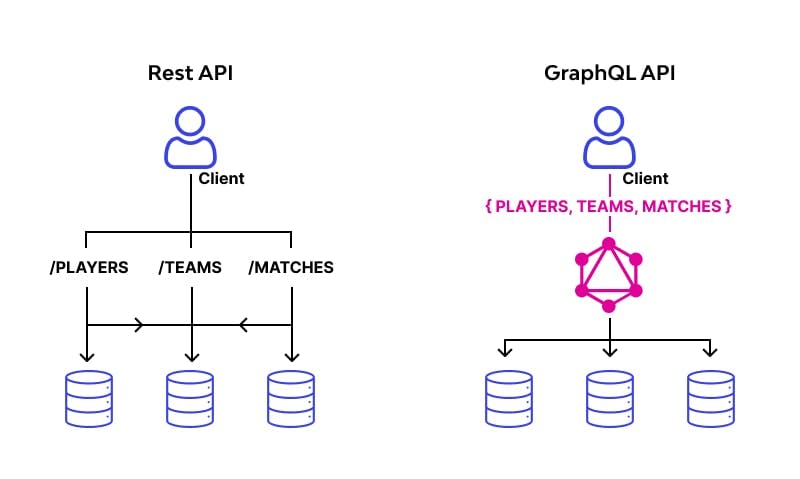What is GraphQL?
GraphQL is a query language and runtime for APIs. It was created by Facebook and open-sourced in 2015.
In simple terms, GraphQL is:
A query language: It provides a syntax for clients to define the exact data they need from an API.
A runtime: It runs on the server and provides an API layer over your existing data.
Some key benefits of GraphQL are:
Efficiency: GraphQL queries fetch only the required data fields, avoiding over- or under-fetching of data.
Flexibility: GraphQL queries can fetch data from multiple data sources in a single request.
Strong typing: GraphQL defines a type system for the data, providing runtime validation of queries.
Self-documenting: GraphQL exposes introspection, allowing clients to discover the graph structure.
How Does GraphQL Work?
GraphQL provides a single endpoint for the API, typically /graphql. Clients make requests to this endpoint to fetch the data they need.
A GraphQL query specifies the exact data fields required from the API. For example:
{
user(id: 1) {
firstName
lastName
}
}
This query will fetch only the firstName and lastName fields for the user with ID 1.
The GraphQL schema defines the types and fields available in the API. Resolvers are functions that fetch the actual data when a query is executed.
When a query is received, the GraphQL runtime:
Validates the query against the schema
Executes the resolvers for the fields in the query
Returns the data in a JSON response
GraphQL vs REST

GraphQL and REST are two different API architectures:
REST uses HTTP methods and URL paths to access data. It returns full resources in responses.
GraphQL uses a query language and a single endpoint. It returns only the requested fields in responses.
Some advantages of GraphQL over REST:
Efficiency: GraphQL returns only the requested data, while REST often over- or under-fetches data.
Flexibility: GraphQL queries can fetch data from multiple sources in one request.
Versioning: GraphQL uses a field-level approach to versioning, making it easier to evolve APIs over time.
How does GraphQL work?
Curious about how GraphQL efficiently retrieves precisely the data you need, without any excess?
Essentially, using GraphQL involves creating a type system that allows you to execute targeted queries. Each type can contain fields and functions that determine the available operations. When combined, these components form a GraphQL service.
When a client sends a query to the GraphQL service, an integrated query parser utilizes your schema to validate the incoming query. If no errors are found, it executes the associated functions for the requested fields and returns a result.
What sets GraphQL apart and makes it special?
GraphQL is special for several reasons. Firstly, it simplifies the process of querying data by allowing clients to request exactly what they need in a single request. This saves time and resources because the server doesn't have to make multiple requests to fulfill the client's requirements.
Secondly, GraphQL supports real-time subscriptions, which means that clients can receive updates whenever a specific operation is performed on the server. This enables applications to be more responsive, providing users with up-to-date data as it changes in near real-time.
Lastly, GraphQL is designed to be language-agnostic, meaning it can be used with any programming language. This flexibility makes it easier for developers to integrate GraphQL into their existing applications and quickly build powerful APIs without being restricted to a specific language.
If you enjoyed reading this blog, we would greatly appreciate your support by giving it a like. Your feedback and engagement mean a lot to us. Thank you for taking the time to read and engage with our content!

